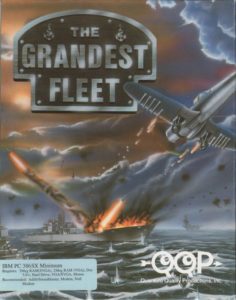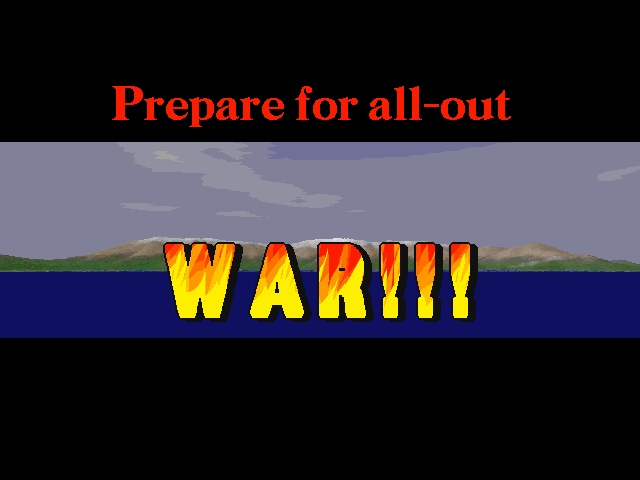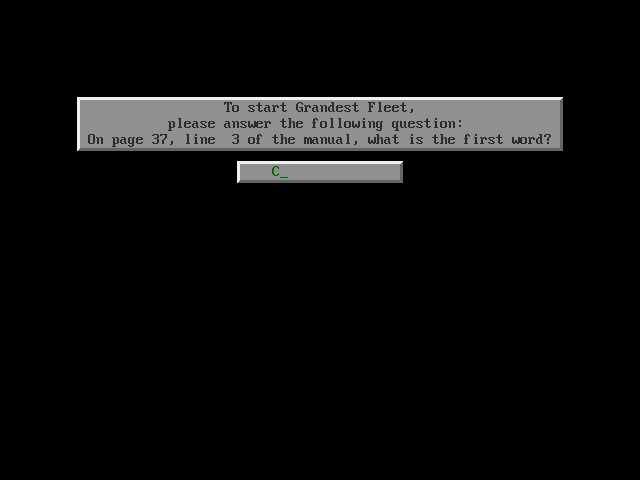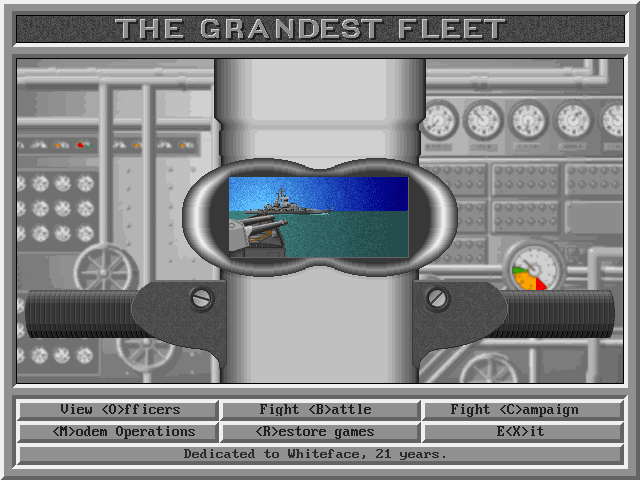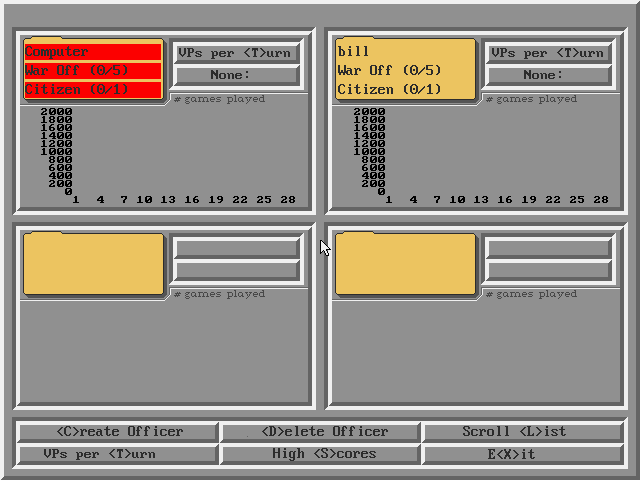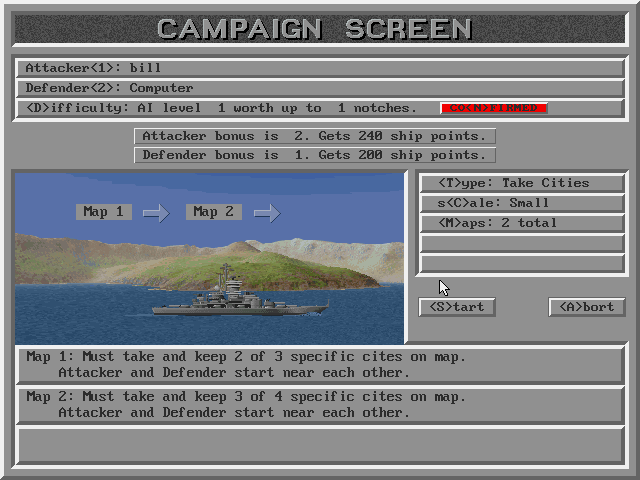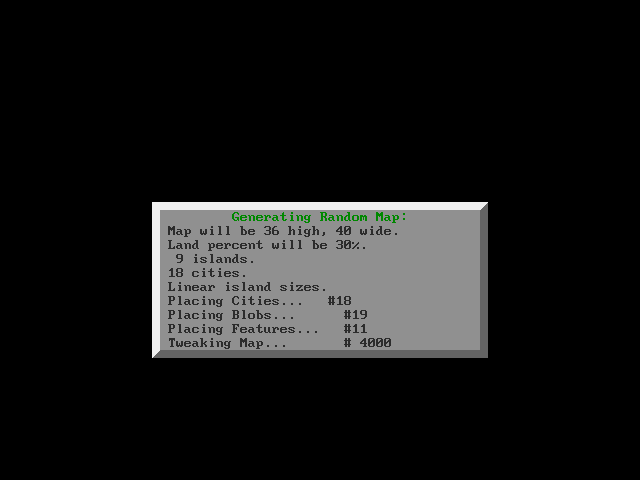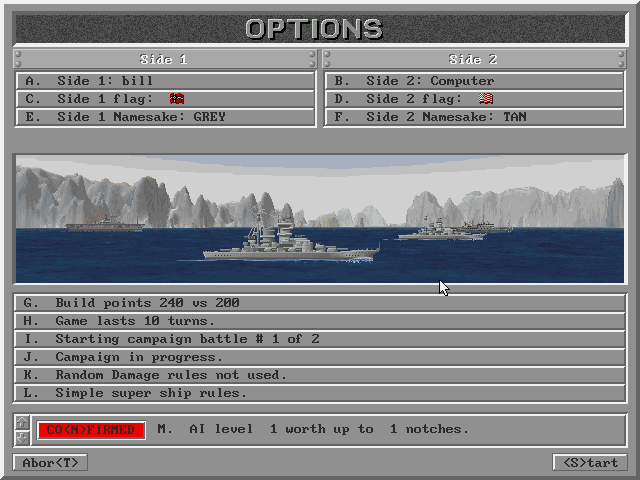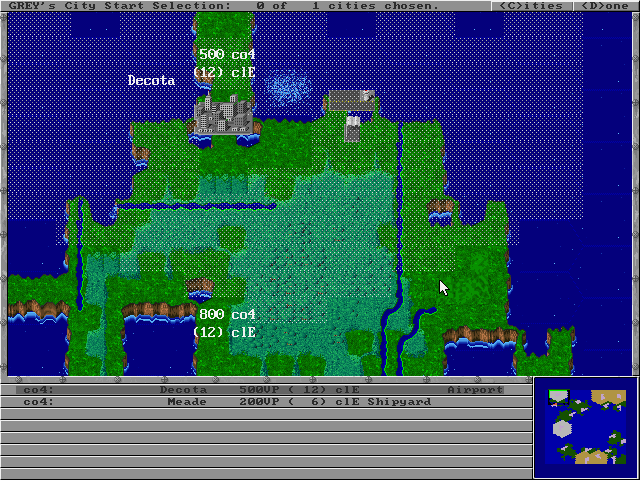The Grandest Fleet description
Naval turn-based strategy, which, in General, it can be called a wargame. Is spiritually close to the old tabletop war games. The game has two main modes – battle or campaign. Battle for a selection of nine (ready), but I can model their own battle. Before the start of the game you need to create your Admiral, but the RPG element of the game is missing features he does not, as the passing game (passing, of course, in campaign mode) will only be issued for awards that increase its "rank", which will allow you to for the next flagship missions more powerful ships.
At the beginning of the game you need to purchase troops. Each ship is different in cost, the price is expressed in "points". The initial number of points you set for yourself before you start the gameplay (always equal for you and the opponent). Also, before you start the game you need to set the number of valid moves of the parties (may be infinite, to the complete destruction of one of the players), the number of primary zones that can accommodate troops, and the difficulty level of the game consists of a number of parameters (close or not to the history of the conditions of the battle, more simple or more complex rules of the game, the level of "advanced" AI).
The game itself, as you probably already guessed, is a map – however, this time, for the most part the map the ocean and with a good scale, so before the eyes at a specific point in time will be only a portion of it. Marked with two colors a few areas: the red color belongs to you, white is the enemy. Initially, troops can be placed only within their zones, of course, send in any. Inside each area is almost always land, and any port city, each of which has some advantages and disadvantages in terms of possession. Belonging to the enemy lines is available for detailed study. However, to see the exact number of enemy ships will be possible only if the area with them is in visual range of your ships or cities (enemy city to explore is always possible).
The in-game map is divided into quite usual for this kind of games hexagons-based, one GCSE can be up to two vehicles of any type. All the ships have different movement speed for the move: some can pass for it a few hexes, some move only one. In theory, it is possible that, as in the game Conquered Kingdoms, one hex per turn will get three or more ships, this leads to the complete destruction of all of them, except one, and is highly undesirable. If GCSE are two ships to pass through other ships will not be able (if one can).
In The Grandest Fleet features twelve types of troops, of which ten ships of various types. There are also terrestrial coastal FORTS and a completely unique flying contraption called Bomber (rarely present). In the beginning of the game, as we remember from above, you are given a certain amount of points (you and set) to create these objects. Ships, apparently, for the most part almost modern: there are aircraft carriers, battleships, cruisers, minesweepers, patrol boats, submarines, destroyers, transport ships and so on. It is clear that each of them has its purpose (for example, only destroyer is able to detect and sink an enemy submarine, a minesweeper may only deactivate the mine and so on), and it is important to note that in this game, in General, no useless units, each for something useful.
Each party takes place in more than standard for games of this kind: first one player moves his ships and gives them some orders, then as it "completes" the course. You can then order the construction of new buildings in the owned areas (the game has a small economy) and the creation of new troops (of course, all this is possible only if you have at least one city). Further already there is an automatic battle: first you do your melee attacks, then go to melee attack an opponent, then – first, your ranged attacks (if they are possible and if they are not the only one in the attack), then it, then sums up the battle. And only after that comes the turn, where the opponent is going to do all vysheozvuchennoy first.
Each combat unit has two parameters: the attacking force and "life", that is the number of attacking enemy forces, which is required for its destruction. To attack the enemy must order a ship to move them on occupied (enemy) hex. If the ship can conduct attack a far – enough to move it to the hex from which he can reach the enemy. If the hex occupied by two divisions of the enemy, will have to contend with both. As in the Conquered Kingdoms, there is a system of "strict consistency": when attacking, each side considered its strength at the time of the collision. In practice, this means that even if his attack destroyed some enemy ship, then when the right attack move to the opposite side, that the ship, as it were, destroyed, can still participate in the battle will disappear from the map at the end.
The above-mentioned parameters of force and the protection of each ship is different, and some ships can't, in spite of his strength to confront some other, therefore it is always better to collect small units of different types of ships, among which must be capable of destroying enemy submarines and bombers. In addition to conventional ships, the game features improved modifications – first, they cannot be created, but if you conduct appropriate research in the cities, they will become available.
The city is almost the basis of all games, because their number on each side often is the key and even a victory condition. The city can not attack the enemy (only if next to him built the Fort), but is able to withstand a certain amount of enemy attacks. The capture of the city, we get a new production points for creating new ships (that is, income), as well as the possibility of new "physically" - but only if the city has a shipyard. Cities are divided into several classes (denoted in Latin letters), belonging to a class depends on population – the more, the more the city brings in income.
At the beginning of each of his moves are special "points of culture", which can (and should) spend on the development of cities through the construction of various buildings. Some of them are vital (for example, repair dock allows you to repair damaged in the fighting of court), some contribute to the growth of income of the city, or even raise his grade. The number of issued "cultural points" is directly proportional to the number of cities that you own. The town there is such a thing as size measured in number, and in order to capture the city, it is necessary for him to bring a detachment of ships whose total attacking force exceeds this number. However, it (the number) it is possible to reduce periodic attacks ships and then capture, when he is weakened. In addition to enemy cities, which can only capture, is and neutral, which you can capture and "buy", but it is a very large number of points.
The graphics are, and even given the subgenre, looks surprisingly nice, and it even almost no conventions: large clear maps of coastal land including, you can even consider specific structure (albeit fully 2D), the interface is surprisingly simple and straightforward. Verdict – a very enjoyable and exciting game that reproach which can only be a not too large level of complexity. And then such about it can tell only true veterans of the subgenre. All the other fans of similar games, particularly on the marine theme, look at The Grandest Fleet is required – for this is a great example of what even this sort would require intense brain game can be an excellent way to relax with benefits for the mind and soul.
Relive your old memories by playing The Grandest Fleet free and online on your browser now.
Source: Archive.org, Mobygames.com
